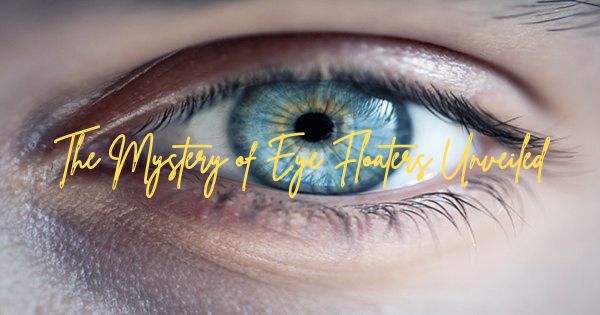Unraveling the Mystery: What Are Those Floaty Things in Your Eye?

Have you ever noticed tiny, shadowy specks or cobweb-like shapes drifting across your field of vision, only to disappear when you try to focus on them? These seemingly elusive visual phenomena are often referred to as eye floaters, and while they can be disconcerting, they are a common occurrence and typically harmless. Let’s delve into the intriguing world of eye floaters, uncovering their origins, potential causes, and their significance in maintaining healthy vision.
Understanding Eye Floaters: The Intricacies of Visual Perception
Eye floaters appear as small, translucent specks or strands that drift across your visual field, often resembling tiny shadows or cobwebs. These floaters are more noticeable when you gaze at a bright, evenly lit background, such as a clear sky or a white wall. While they may appear to be in front of your eye, they are actually inside the vitreous, a gel-like substance that fills the space between the lens and the retina in the back of the eye.
Origins and Composition: Unveiling the Makeup of Eye Floaters
Eye floaters primarily consist of protein fibers and other organic matter that clump together within the vitreous, casting shadows on the retina as they drift. These fibers may result from the natural aging process of the eye, where the vitreous gradually liquefies and shrinks, causing collagen fibers to form clumps. In some cases, eye floaters may also be attributed to eye injuries, inflammation, or certain underlying eye conditions.
Harmless Presence: Differentiating Normal Floaters from Underlying Conditions
In most instances, eye floaters are benign and do not pose a significant threat to vision. However, sudden increases in the number of floaters, accompanied by flashes of light or a shadow-like curtain over your vision, may indicate more severe conditions, such as retinal detachment or bleeding within the eye. If you experience such symptoms, it is crucial to seek immediate medical attention to prevent potential complications and preserve your vision.
Treatment and Management: Navigating the Impact of Eye Floaters
While most cases of eye floaters do not require treatment, individuals may find them bothersome, especially when they interfere with daily activities. In some instances, vitrectomy, a surgical procedure to remove the vitreous gel and replace it with a saline solution, may be considered for persistent and visually disruptive floaters. However, this procedure carries certain risks and is typically reserved for severe cases that significantly impair vision and quality of life.
Embracing Visual Clarity: Prioritizing Eye Health and Regular Check-ups
Maintaining optimal eye health through regular comprehensive eye exams can help detect any underlying conditions that may contribute to the presence of eye floaters. By staying proactive about your eye care and seeking timely medical guidance when necessary, you can ensure that your vision remains clear and unobstructed, allowing you to appreciate the beauty of the world around you with clarity and precision.
Picture Courtesy: Google/images are subject to copyright








